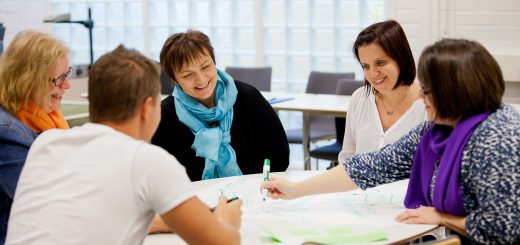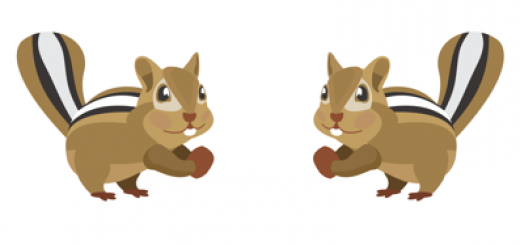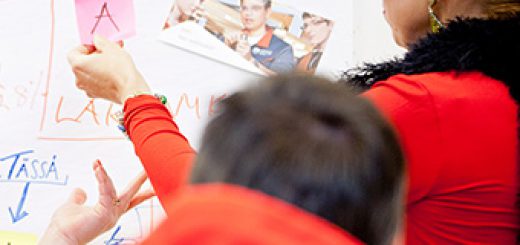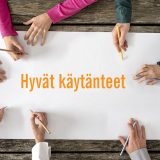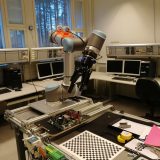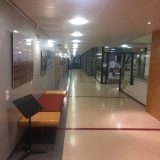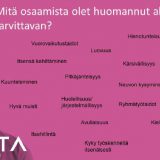Competence, reflection and other mind bogglers
Within the modern Finnish education two key concepts have emerged. These concepts are competence and its derivative competence-based. (The latter term can be seen with or without a hyphen. These words correspond to the noun “osaaminen” and the adjective “osaamisperusteinen” in Finnish. Slightly more difficult to translate is the noun “osaamisperusteisuus” or “the act of being competence based”. I have decided to use the word combination “competence-based approach” instead.)
This is not to imply that other European countries do not have similar concepts. Still, the Finnish implementation is sufficiently distinct to warrant some exploration. This essay deals with some key concepts that a novice teacher student is certain to encounter.
Here you will find some definitions of competence in education. (The following list is based on the book “Osaamisen Opettaja” by Asko Karjalainen and the Oulu School of Professional Teacher Education.)
- Competence-based approach incorporates or contains everything related to teaching skills, practises and competence.
- Competence-based approach is student-oriented or student-centered.
- Competence based education is also work-based or working-life oriented.
- Competence based education means that the objectives of the education are defined as the student’s broad learning outcomes and not as separate lessons, study subjects, or narrow skills sets.
- Competence-based approach necessitates the design and implementation of large-scale competence units instead of individual courses.
- With competence-based approach, the existing knowledge and skills (read: competence) already mastered by the student are taken as the starting point for the design and implementation of education.
- This means that the student’s prior competence is first identified, evaluated and recognized, and finally accepted as part of the degree.
- Competence-based approach means the creating, enabling and realization of the student’s personal study path. Each pathis unique, just like every person’s skill-set is unique.
- Competence-based approach requires that the assessment of competence is based on authentic and real working life situations and professional problem-solving skills.
- Competence-based approach also requires that the competence criteria, the intended learning outcomes (ILOs) and assessment criteria are all clearly defined. Training or education starts with the identifying the existing competence, in which self-assessment is the central tool. Existing competence is then identified and recognized. Inadequate competence has to be supplemented and the missing competence will be acquired, for example, through training. If the competence already exists (as defined by the competence criteria), no training is needed.
- It should be mentioned that all methods of achieving competence are equally valid: such as formal school education, everyday experiences leading to tacit knowledge and even the skill-sets acquired through hobbies; as long as the result is the competence as defined by the competence criteria.
- Sometimes acquiring competence requires unlearning old habits and methods.
Self-assessment
One of the biggest challenges of our new students is the creation of their first self-assessment, based on a set of questions about the competence areas of our school. Let’s have a brief glimpse at one of the topics. (There are more than 40 topics and subtopics altogether.)
Competence in planning
- You are familiar with the documents that regulate planning, teaching and guiding.
-As a part of teacher’s work, you explore documents correlating to planning education and guidance in your own substance field.
This is probably one of the easier topics, but the reader still might be baffled by the title “Competence in planning”. Planning what? After much thought, the reader might (rightly) conclude that the topic is about designing or creating “education” (or lectures/teaching/learning activities). But then, what do the words “explore documents” mean? Does it mean that the student should read, browse, memorize or understand a text or is something different implied? And what are these so-called “documents”, are they laws, rules, school books…? Answering to the first questionnaire with its abundance of topics and subtopics and then creating the personal study plan based on the answers can be a harrowing experience, albeit a necessary one. It is rather typical for the new student to overestimate his/her skills or contrarily severely underestimate the existing competence. Both views are detrimental, as the study plan can be only created based on true understanding of the skills and competence. As stated in the previous chapter, each path is unique and individually tailored, “bespoke”.
How to document your competence?
Whatever its scope or depth might be, the existing and growing competence must be made visible. Only then it can be identified, evaluated, recognized and finally accepted as a part of the degree. There are numerous ways in this process; such as a demonstration of skills (for example actually teaching in a classroom with the tutors observing), reflecting or writing to a personal blog, making video diaries, photographing actual situations, discussion with your tutors or presenting and explaining the meaning of appropriate documents. Just showing a school report or even a thesis is not enough; the document’s validity and contents (and compliance with the competence criteria and ILOs) must be thoroughly explained!
One of the more important tools for documenting your competence is the reflection of your skills, competence and experiences using your own words. The dictionary entries for the word “reflect” usually list more than ten separate meanings, but we are interested in definitions such as “to think, ponder, or meditate”.
Reflection in personal. It means using “I” and “me” a lot. It also means listing and analysing your own experiences, opinions and competences, ruthlessly and truthfully. Sometimes it means admitting errors and mistakes, acknowledging false starts and misconceptions. This personal approach is very difficult for many people. These people tend to be shy, modest and afraid of their public presence in internet. Even when a person’s opinions and experiences are valid, it is hard to refer to them and make them public. What if someone says you are wrong? What if you reveal too much? What if you lack experience as a teacher and it shows? Can you actually reflect on being a teacher if you lack the actual teaching experience? To these shy people all we can say is that the great public is actually not that keen in reading somebody else’s study oriented blog! The blog is the tool for the student to show his/her competence and for the tutors to access that information, warts and all – and the access to the blog can always be limited!
There are people who would like to use only nice, positive, general sentences such as “This experience made me a better person…”. (This is from an actual essay.) The tutor would then have to ask “Define how it made you a better person? What are the perceived signs of being a better person? How, or through which procedure, did the experience have an effect on you?” And so on.
Reflection is not listing something general, like “A good teacher should have the following properties:…” or anything copied verbatim from Wikipedia. (The copycats will always be exposed!) Also, reflection should not deal too much with inessentials, such as what clothes were people wearing in the classroom, who was being impolite, what kind of food was offered in the cafeteria… Those subjects should be dealt in social media, if at all.
Luckily, the art of reflection can be learned just like any other skill.
Parting shots
The Finns have used a term for many years: ”mutu”. It is a short form from “musta tuntuu”, in English “I think that…” or “My (educated) guess is…”. A similar term in English is the “gut feeling”. It is alarming to think that many important and crucial decisions are made and actions taken based on the gut feeling or “mutu”.
The leap from an educated guess to false information is short. It is deceptively easy to assume and to use the so-called “common sense”. It must be understood that reflection is not the same as gut feeling, or assuming things without any factual basis. Also tacit knowledge does not equal to common sense.
One trend I have noticed in the current climate is “anticleverness”, the anti-intellectual tendency to consider many formerly positive things as useless snobbery and silliness. Pertinent examples are education, good manners, the ability to read, write and calculate. “Booksmarts” is a now a deep flaw you do not want others to find in you! The years spent in schools and universities are considered as wasted. According to this view, a clever person has other, more lucrative pathways to success and money: vlogging, true-TV reality shows, being a “celebrity” or rap artist.
Well, it does not have to be like this. Working as a competent teacher in Finland, you can resist the deterioration. With your steady competence-based teaching skills, and with your broad array of diverse teaching methods, you can stop the silliness and state firmly “Not on my watch! The buck stops here!”
Useful links:
Osaamisperusteisuus | Competence Based Learning (with English subtitles)
https://youtu.be/9m3eGWpVM-c
Reflektio | Reflection (with English subtitles)
https://youtu.be/s93jCdTkeq8
Osumia: Tieto 1 – Mitä on tieto? | Educational Impacts: Knowledge (with English subtitles)
https://youtu.be/T25zz6bs6aE
Video Pedagogy
https://youtu.be/aP-EF5jfr4o
Opiskelijan rooli – Student’s Role (with English subtitles)
https://youtu.be/givekPyT53Q
Osaamisen Opettaja by Asko Karjalainen & others (in Finnish)
http://oamk.fi/amok/emateriaalit/files/5514/7936/3756/Osaamisenopettaja-Amok_2016.pdf
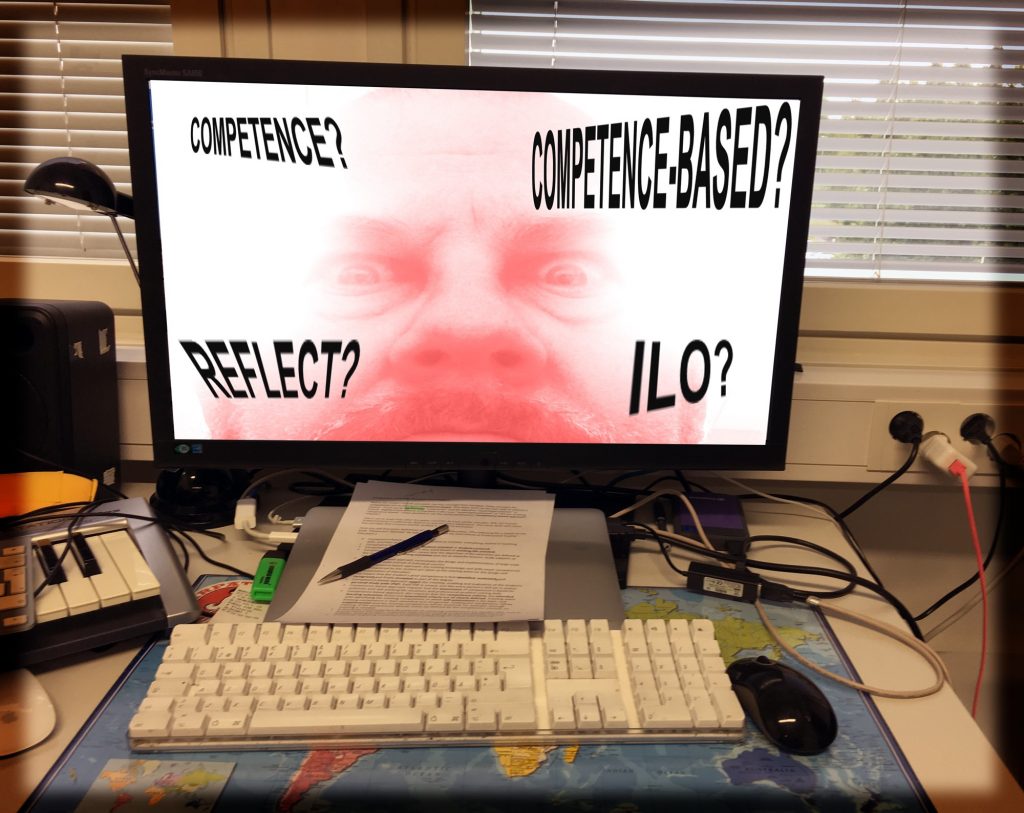
Lecturer Juha Pousi
Oulu University of Applied Sciences
School of Professional Teacher Education

